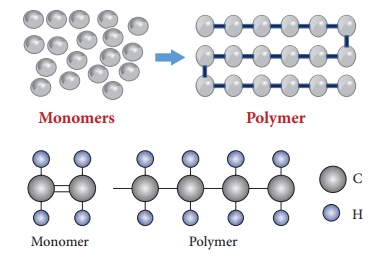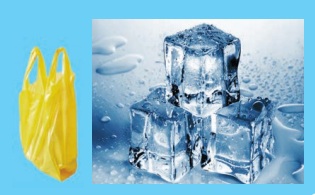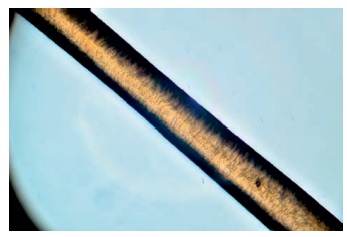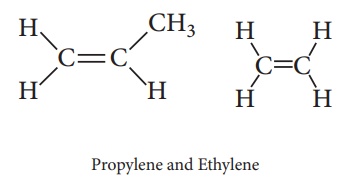Polymer Chemistry | Term 3 Unit 3 | 7th Science - What Are Polymers? | 7th Science : Term 3 Unit 3 : Polymer Chemistry
Chapter: 7th Science : Term 3 Unit 3 : Polymer Chemistry
What Are Polymers?
What Are Polymers?
The word ‘Polymer’ is of Greek origin. ‘Poly’ means many and ‘mer’ means basic smaller unit. Polymers are very long chains made of repeating smaller molecules called ‘monomers’ that are joined together by covalent bonds and the process is called polymerization. The diagram below shows how repeating monomers join to form a polymer:

Polyvinyl Chloride (PVC) is a common
plastic used for water pipes. The monomer and polymers of PVC is shown below.

ACTIVITY 1
Compare the following
things. Ice cubes and a polythene bag. In both the materials, there are large
number molecules combined together. Are both polymers?

Polymer
Polymers can be classified into
natural and synthetic polymers. Can you imagine that your body produces and you
are made up of natural polymers? The most familiar polymers that we use in our
daily life are man-made and synthetic.
Natural Polymers
Natural polymers are found in living
systems that include proteins and carbohydrates in our bodies and cellulose in wood
and paper. They play a very important role in living things to provide
structural materials and molecules needed for life processes.
Protein polymers are made from amino
acid monomers (20 different kinds of amino acids). Different combinations of
the amino acid monomers create many different protein polymers. Examples of
protein polymers include DNA, enzymes, silk, skin, hair, fingernails, feathers
and fur.

Examples of carbohydrate polymers
include cellulose, chitin and lignin found in plants. Cellulose is made of
sugar molecules and is the main component of cotton used in clothing. Chitin is
found in the cell walls of fungi such as mushrooms and exoskeletons of insects
such as crabs and spiders. Lignin consists of a network of polymers and is
important in giving structure to plants.
Synthetic Polymers
Synthetic polymers are man-made
polymers produced by using raw materials from petroleum oil and gas. Plastics
are synthetic polymers. When oils and gases are processed to make petrol,
ethylene and propylene monomers are removed as by- products. We have already seen that
polymer such as the Poly Vinyl Chloride (PVC) is made up of many monomers
joined together. Ethylene and propylene are the building block monomers that
make up many different types of plastics.

Based on the nature of the monomers,
the way they are arranged in the polymer and the characteristics of final
polymer.
There are grouped into different
categories such as fibres, plastics, proteins. Let us study about few of them
in the following sections.
Related Topics